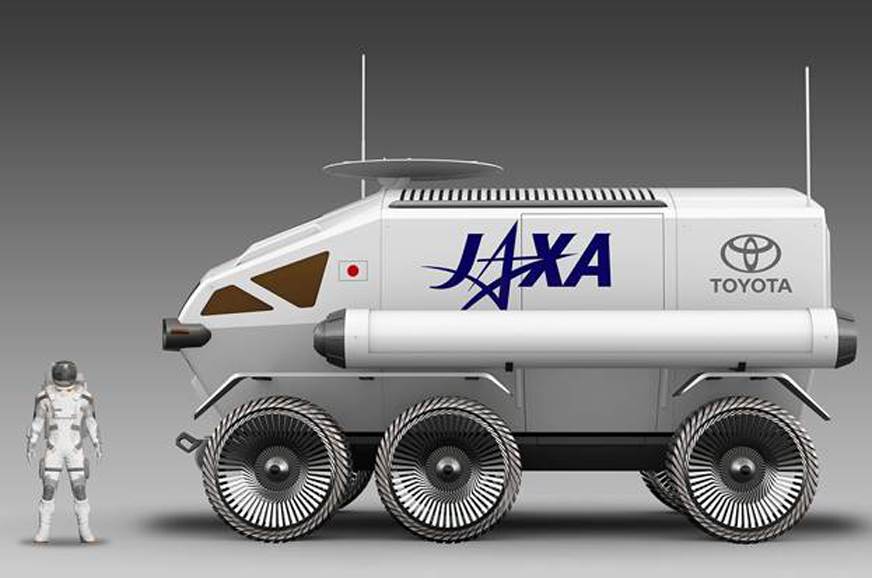As a first step, JAXA and Toyota have reached an agreement to further cooperate on and accelerate their ongoing joint study of a manned, pressurised rover that employs fuel cell electric vehicle technologies. Such a form of mobility is deemed necessary for human exploration activities on the lunar surface. Even with the limited amount of energy that can be transported to the moon, the pressurised rover would have a total lunar-surface cruising range of more than 10,000km.

International space exploration, aiming to achieve sustainable prosperity for all of humankind by expanding the domain of human activity and giving rise to intellectual properties, has its sights set on the moon and Mars. To achieve the goals of such exploration, coordination between robotic missions, such as the recent successful touchdown by the asteroid probe Hayabusa2 on the asteroid Ryugu, and human missions, such as those involving humans using pressurised rovers to conduct activities on the moon, is essential. When it comes to challenging missions such as lunar or Martian exploration, various countries are competing in advancing their technologies, while also increasing their cooperative efforts.
JAXA president Hiroshi Yamakawa said, "At JAXA, we are pursuing international coordination and technological studies toward Japan's participation in international space exploration. We aim to contribute through leading Japanese technologies that can potentially generate spin-off benefits. Having Toyota join us in the challenge of international space exploration greatly strengthens our confidence. Through our joint studies going forward, we would like to put to use Toyota's excellent technological abilities related to mobility, and we look forward to the acceleration of our technological studies for the realisation of a manned, pressurised rover."

Toyota president Akio Toyoda said: "Going beyond the frameworks of countries or regions, I believe that our industry, which is constantly thinking about the role it should fulfil, shares the same aspirations of international space exploration. Furthermore, cars are used in all of Earth's regions, and, in some regions, cars play active roles as partners for making sure that people come back alive. And I think that coming back alive is exactly what is needed in this project. I am extremely happy that, for this project, expectations have been placed on the thus-far developed durability and driving performance of Toyota vehicles and on our fuel cell environmental technologies."

Also, at a symposium held in Tokyo, JAXA vice-president Koichi Wakata and Toyota executive vice-president Shigeki Terashi held a talk session.
JAXA’s Koichi Wakata said: "At JAXA, we are studying various scenarios as well as technologies that will be applied to specific space missions. Manned, pressurised rovers will be an important element supporting human lunar exploration, which we envision will take place in the 2030s. We aim at launching such a rover into space in 2029.

"Lunar gravity is one-sixth of that on Earth. Meanwhile, the moon has a complex terrain with craters, cliffs, and hills. Moreover, it is exposed to radiation and temperature conditions that are much harsher than those on Earth, as well as an ultra-high vacuum environment. For wide ranging human exploration of the moon, a pressurised rover that can travel more than 10,000km in such environments is a necessity. Toyota's 'space mobility' concept meets such mission requirements. Toyota and JAXA have been jointly studying the concept of a manned, pressurised rover since May of 2018.
Comments
Post a Comment